Rebecca Wilson – 31 May, 2012
Free from the conceptual connotations of a heavy past, Reddaway proposed the baroque as ‘a way of seeing' rather than the exhibited works being about a baroque style. Aotearoa Baroque considered New Zealand's ‘biculturalism' as a complex, non-linear, constantly developing state of ‘becoming bicultural'.
Mexico City
Group show
El Barroco de Aotearoa: Arte Contemporáneo de Nueva Zelanda
Curated by Richard Reddaway
2 December 2011 - 31 January 2012
Richard Reddaway is well known in New Zealand as a sculptor, photo-collagist and academic, but he also has another life as a curator. Last year he instigated and curated the exhibition El Barroco de Aotearoa: Arte Contemporáneo de Nueva Zelanda (Aotearoa Baroque: Contemporary Art from New Zealand) shown at MUCA Roma (1.) in Mexico City as the latest instalment in Massey University School of Fine Art’s Aotearoa Baroque project. It was an ambitious venture with the six artists and curator travelling to Mexico for two weeks, and it offered a Mexico City audience the rare opportunity to see work from a culture not normally encountered. The exhibition was opened by the New Zealand ambassador in Mexico, with the flags of both countries at the exhibition’s entrance, followed by a rousing haka about earthquakes and volcanoes by exhibiting artist Reweti Arapere - an appropriate point of connection between New Zealand and earthquake-prone Mexico City, nestled as it is in a valley surrounded by volcanoes.
As the curatorial essay makes clear, in contrast to New Zealand, Mexico is profoundly baroque, a concept which Mexican audiences approach with a mass of historical, cultural, aesthetic and metaphorical connotations. The prevalence of horror vacui, fear of the blank space, well describes the impetus behind the baroque aesthetic of Mexican popular and traditional visual culture as well as the optically saturated markets, streets, public places and churches. The baroque permeates everyday life in the megalopolis. The ‘many Mexicos’ of tradition and contemporaneity, wealth and poverty, indigenous difference and globalised capitalism superficially seem to exist in parallel worlds but in actuality they are continuously constituted in relation to each other in ways that could be summed up as being ‘baroque’. Moreover, the baroque as a historical movement is profoundly part of Mexico’s artistic, cultural and literary traditions.
Out of this complexity of references and connotations, the aspect curator Richard Reddaway homed in on to develop his argument about Aotearoa New Zealand’s ‘becoming bicultural’ identity is the baroque’s synchronistic nature. A globalised artistic movement, the baroque was localised in each place it took hold, meaning that it manifested a fusion of cultures. In Mexico this was a blending of Spanish Catholic colonialism with the indigenous cultures, exemplified by the rich craftwork adorning many Mexican churches in which the indigenous artisans merged the icons and symbolism of Catholicism with their own traditions and beliefs, creating a new cultural fusion. Free from the conceptual connotations of a heavy past, Reddaway proposed the baroque as ‘a way of seeing’ rather than the exhibited works being about a baroque style. Aotearoa Baroque considered New Zealand’s ‘biculturalism’ as a complex, non-linear, constantly developing state of ‘becoming bicultural’.
Although Simon Morris’s love affair with modernism would seem to make him an unlikely candidate for inclusion in this exhibition, his wall painting best demonstrates the Aotearoa Baroque argument in terms of cultural syncretism. A series of yellow and black lines parallel the gallery’s stairway, ascending in a horizontal formation above it and crossing over onto the adjacent wall to travel down. The curve with which each section of black line or shade of yellow line ends is faintly visible through the curve which begins the next section, creating a subtle circle at each pause in the painting. This gentle echo of a Gordon Walters’ koru, along with the bend that begins and ends each long stretch of line, suggests the syncretism that Walters explored in his translation of international minimalism into a local Maori/Pakeha context. And Morris conducts his own syncretism when he applies his simple rules for constructing a wall painting to a specific space, and by implication the local context.
The exploration of complex, unending line is also present in Jae Hoon Lee’s floor to ceiling photograph, Root, which entirely covers two walls of a room in the gallery. The viewer is placed amongst the open-air root system of an enormous tree. Metaphorically resonant with the idea of identity formation as a continuous, dynamic process, these roots were digitally constructed: fabricated, serial, potentially infinite. A couple of sparrows and a blackbird perch amongst the roots, dwarfed by their surroundings and camouflaged, yet it is native bird calls that are gently piped into the space. The work thwarts any understanding of the ‘indigenous’ in relation to the ‘introduced’ in terms of a simplistic either/or dichotomy. These digital roots are suggestive of a new kind of syncretism, for in our current era Google provides such easy access to information that images are continuously sourced and combined to produce new variations, regardless of origin and beyond notions of authenticity or artificiality.
Catherine Bagnall exhibits five photographs (in collaboration with photographer Aliscia Young) from recent performances in which she tramps through the bush dressed-up in hooded cloaks, muffs, ears and tails. With her body dwarfed and unidentifiable beneath all the heavy brocade, pattern, fur and raw, exposed stitching, she plays at becoming her desired ‘other’, inhabiting an ambiguous state between mimicking a hapless, unwilling predator (animal or human) and seeking a sublime union with nature. The performances are a fantastic work, but somehow the idea of the artist conducting these solitary walks is more powerful than the photographs. The way the performances are presented leaves room for an almost mythical story around the walks to be more strongly evoked in the future.
Joanna Langford’s installation, Baltic Wanderers, also occupies an in-between state of continuously becoming something or leading somewhere only to have the promise of a destination fade like a mirage too closely approached. In a looped projection or kind of tableau vivant, a provisional and precarious-looking structure - resembling a fantasy ship or off-kilter oil rig - slowly emerges out of sea fog and then disappears again. A thin cable suspended between flimsy rods that are topped with tiny LED lights extends from the gallery space into the projection, the point at which it is no longer present as a physical object blurred as it meets its digital continuation.
The presence of nature in the works by Bagnall and Langford evokes the sense that the natural world in Aotearoa/New Zealand is overwhelmingly permanent, that it is ‘always close yet incomprehensible’, as Reddaway puts it, that human occupants tread within it temporarily and tentatively. Although clearly not true, somehow that feeling persists, probably due to the sheer dominance of nature, the relatively sparse population and New Zealand’s island state.
Jae Hoon Lee’s digital roots and Terry Urbahn’s work Bottle Mosh, are by contrast, more suggestive of the kind of relationship with nature experienced in the intensely urban environment of Mexico City. New Zealand may be subject to the unstoppable flows of contemporary globalisation, but in Mexico, sandwiched as it is between the U.S. and the rest of the Americas, flux and friction feel more urgent.
In Urbahn’s video and audio installation, eight screens in a circle on the floor show a colourful jumble of plastic detritus continuously rolling around in the tide to the rhythm of Motorhead. Of the six works in the show, Urbahn’s comes the closest to evoking the excessive visual chaos characteristic of the baroque. Ironically (but typically, given the vein in which he works), it was the rubbish bobbing in the River Tiber which captured his attention over the classical riches Rome has on offer. As just a block from the gallery a particularly chaotic stretch of Insurgentes rumbles past - purportedly the longest avenue in the world, it is home to surging traffic and in this section much commercial detritus - the work was not out of place in its Mexican context.
As classicism meets the vernacular in Urbahn’s work, so Rewiti Arapere works in the crossover between tradition and vernacular. His characters hail from Pou Whenhua but rather than being carved in wood they are constructed out of cardboard packing boxes which bear printed traces of their local ‘made in Toluca’ origin. Painted with aerosol and markers, in their quest to stake out a place to stand in an urban culture they have adopted something of the guise of demi-gods from a martial arts film. Fusing together different cultures and visual vocabularies, these adrift warriors suggest a sense of antagonism.
The exhibition could have more thoroughly explored this antagonistic aspect of the contemporary baroque. The syncretism proposed by the Aotearoa Baroque suggests a coherence of elements that produces a new fusion (a state of ‘becoming bicultural’), no matter how unstable and multiple it might be. Okwui Enwezor’s concept of ‘intense proximity’, defined as ‘the degree of nearness in which cultural, social, and historical identities and experiences share and co-exist within the same space, while exposing the fault lines of cultural antagonism’(2.), is revealing here. ‘Cultural antagonism’ is certainly present in Aotearoa New Zealand, but in Mexico it is urgent, explosive and sometimes violent, so that identities and experiences often rub against each other without cohering. Enwezor’s ‘intense proximity’ and its relationship to the Aotearoa Baroque offers opportunities for dialogue between Mexico and New Zealand that could be fruitfully explored.
Whether because of the excessiveness, complexity and antagonism of the contemporary baroque in Mexico, or whether due to its being framed in the broader context of an exchange between two cultures, Reddaway’s Aotearoa Baroque felt too modest. He intended it to be a proposition, a concept punctuated with a question mark, and it certainly is a complex and interesting idea. Yet, although well chosen for MUCA’s small, elegant spaces, just six works to test out the idea left me wanting more. An exhibition which aims to convey something about national identity to a foreign audience is best done with subtlety in a way that steers clear of blatant statements or definitions which would threaten the very complexity of ‘identity’. While in this respect Aotearoa Baroque succeeded, it did I think leave the viewer needing more in order for its curatorial concepts to be fully comprehended - especially for Mexican viewers who needed to adopt the proposed curatorial lens and engage with a new culture. Sadly there was no programme of talks by the artists, curator or other cultural commentators to expand on the ideas - a missed opportunity given how unique it was to have the artists and curator in Mexico City.
This MUCA Roma exhibition was one chapter in a larger project and a return exhibition of work by Mexican artists is planned for New Zealand. And of course, as Richard Reddaway explores the baroque in his own artwork through engaging with chaos theory and non-linear aesthetics, it will be most interesting to see how the exchange and his time spent in Mexico influences his own art making and academic thinking.
Rebecca Wilson
(1.) MUCA Roma, Museo Universitario de Artes y Ciencias (University Museum of Arts and Sciences) is one of several spaces funded by UNAM, Universidad Nacional Autónoma de México (National Autonomous University of Mexico). The museum most closely associated with UNAM is MUAC, Museo Universitario Arte Contemporáneo (University Museum of Contemporary Art), which opened three years ago. MUCA Roma is directed by Gonzalo Ortega who participated in the Aotearoa Baroque Symposium at Massey University in March 2011.
(2.)Quoted in Chris Sharp, ‘La Triennale “Intense Proximity”’, Art Agenda, 26 April 2012. http://www.art-agenda.com/reviews/la-triennale-“intense-proximity”/
Recent Comments
Mark Amery
Great comments. And interesting to see this Mexican iteration. Here's a link to my review of the Massey show in ...
Tim Nees
I was lucky enough to be in the audience when Richard Reddaway presented this project at Massey University. I was ...
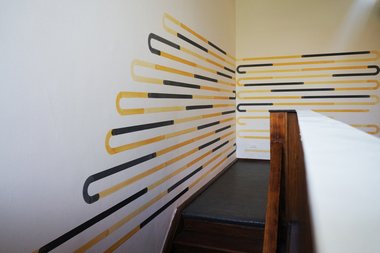
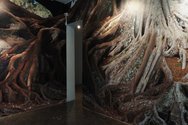
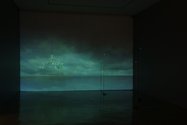

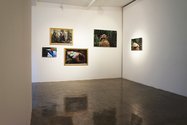
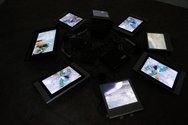
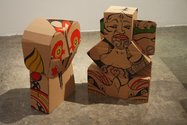
 Two Rooms presents a program of residencies and projects
Two Rooms presents a program of residencies and projects Advertising in this column
Advertising in this column
This Discussion has 2 comments.
Comment
Tim Nees, 1:26 p.m. 31 May, 2012 #
I was lucky enough to be in the audience when Richard Reddaway presented this project at Massey University. I was impressed then, and all the work looks just as impressive now. Excellent in conception and result, in spite of the many challenges. Richard showed some of his recent rhizomatically baroque work in his introduction. He needs a show of his own in Mexico City! (And here. A shame he wasn't included in City Gallery's Obstinate Object.)
Mark Amery, 9:17 p.m. 31 May, 2012 #
Great comments. And interesting to see this Mexican iteration. Here's a link to my review of the Massey show in 2010. http://eyecontactsite.com/2010/08/new-zealand-baroque
You'll note only a couple of the same artists (and only one of the same works I think) - I like the way Richard keeps pushing these ideas around, exploring different ways to look at his theme - that's the positive side of the criticism of the shows being both broad and modest that Rebecca and I both make I think. I'd love to see it developed in a bigger more focused show (and yes with Reddaway included!)
Participate
Register to Participate.
Sign in
Sign in to an existing account.